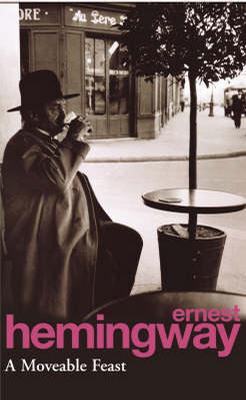-

The Sun Also Rises
The Sun Also Rises was Ernest Hemingway's first big novel, and immediately established Hemingway as one of the great prose stylists, and one of the preeminent writers of his time. It is also the book that encapsulates the angst of the post-World War I generation, known as the Lost Generation. This poignantly beautiful story of a group of American and English expatriates in Paris on an excursion to Pamplona represents a dramatic step forward for Hemingway's evolving style. Featuring Left Bank Paris in the 1920s and brutally realistic descriptions of bullfighting in Spain, the story is about the flamboyant Lady Brett Ashley and the hapless Jake Barnes. In an age of moral bankruptcy, spiritual dissolution, unrealized love, and vanishing illusions, this is the Lost Generation. -

A Moveable Feast
"You belong to me and all Paris belongs to me and I belong to this notebook and this pencil." Begun in the autumn of 1957 and published posthumously in 1964, Ernest Hemingway's A Moveable Feast captures what it meant to be young and poor and writing in Paris during the 1920s. A correspondent for the Toronto Star, Hemingway arrived in Paris in 1921, three years after the trauma of the Great War and at the beginning of the transformation of Europe's cultural landscape: Braque and Picasso were experimenting with cubist forms; James Joyce, long living in self-imposed exile from his native Dublin, had just completed Ulysses; Gertude Stein held court at 27 rue de Fleurus, and deemed young Ernest a member of rue génération perdue; and T. S. Eliot was a bank clerk in London. It was during these years that the as-of-yet unpublished young writer gathered the material for his first novel, The Sun Also Rises, and the subsequent masterpieces that followed. Among these small, reflective sketches are unforgettable encounters with the members of Hemingway's slightly rag-tag circle of artists and writers, some also fated to achieve fame and glory, others to fall into obscurity. Here, too, is an evocation of the Paris that Hemingway knew as a young man -- a map drawn in his distinct prose of the streets and cafés and bookshops that comprised the city in which he, as a young writer, sometimes struggling against the cold and hunger of near poverty, honed the skills of his craft. A Moveable Feast is at once an elegy to the remarkable group of expatriates that gathered in Paris during the twenties and a testament to the risks and rewards of the writerly life. -

A FAREWELL TO ARMS
In 1918 Ernest Hemingway went to war, to the 'war to end all wars'. He volunteered for ambulance service in Italy, was wounded and twice decorated. Out of his experiences came A Farewell to Arms . In an unforgettable depiction of war, Hemingway recreates the fear, the comradeship, the courage of his young American volunteers and the men and women he encounters along the way with conviction and brutal honesty. A love story of immense drama and uncompromising passion, A Farewell to Arms is a testament to Hemingway's unique and unflinching view of the world and the people around him. (20030924) -

The Old Man and the Sea
Set in the Gulf Stream off the coast of Havana, Hemingway's magnificent fable is the story of an old man, a young boy and a giant fish. It was The Old Man and the Sea that won for Hemingway the Nobel Prize for Literature. Here, in a perfectly crafted story, is unique and timeless vision of the beauty and grief of man's challenge to the elements in which he lives.